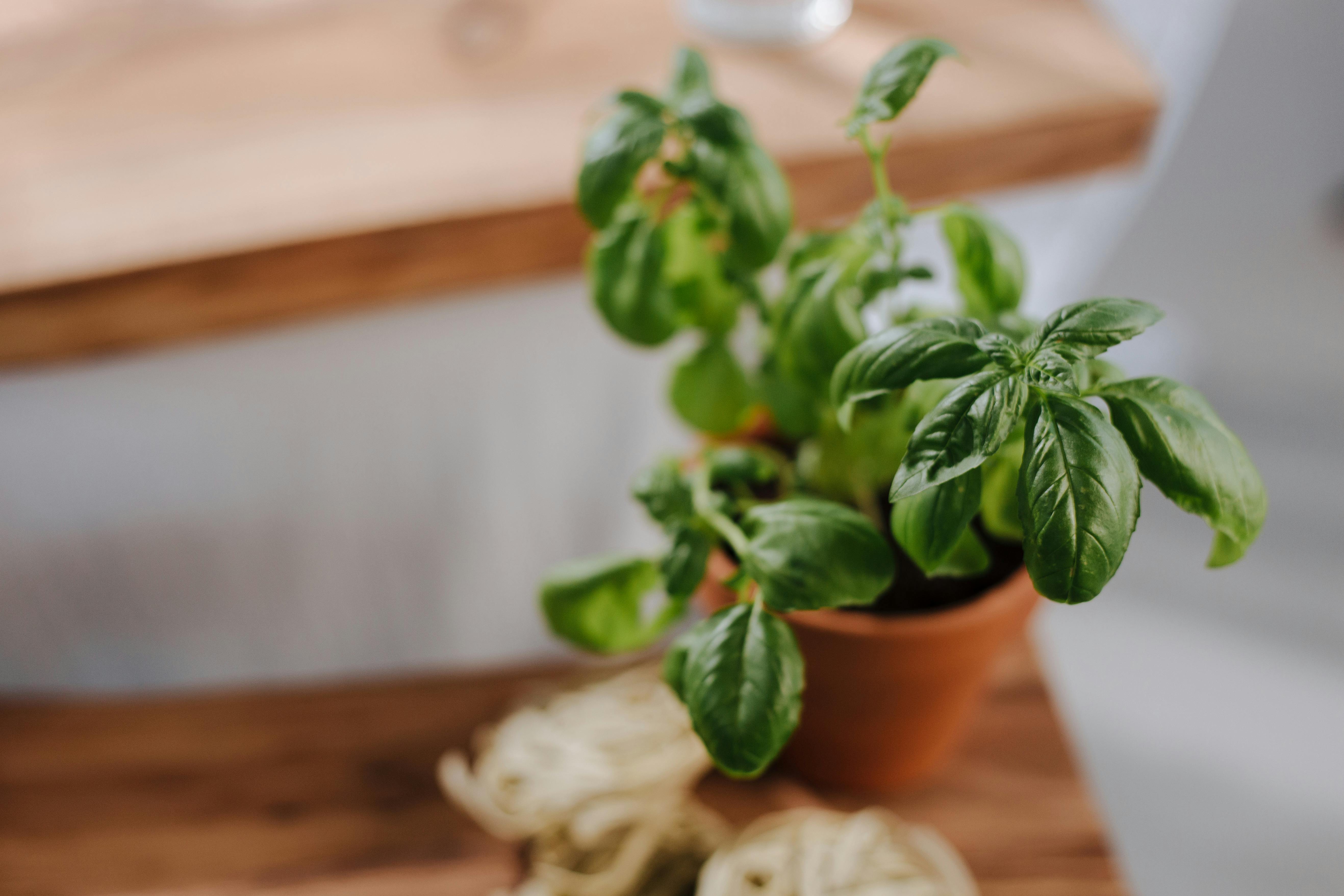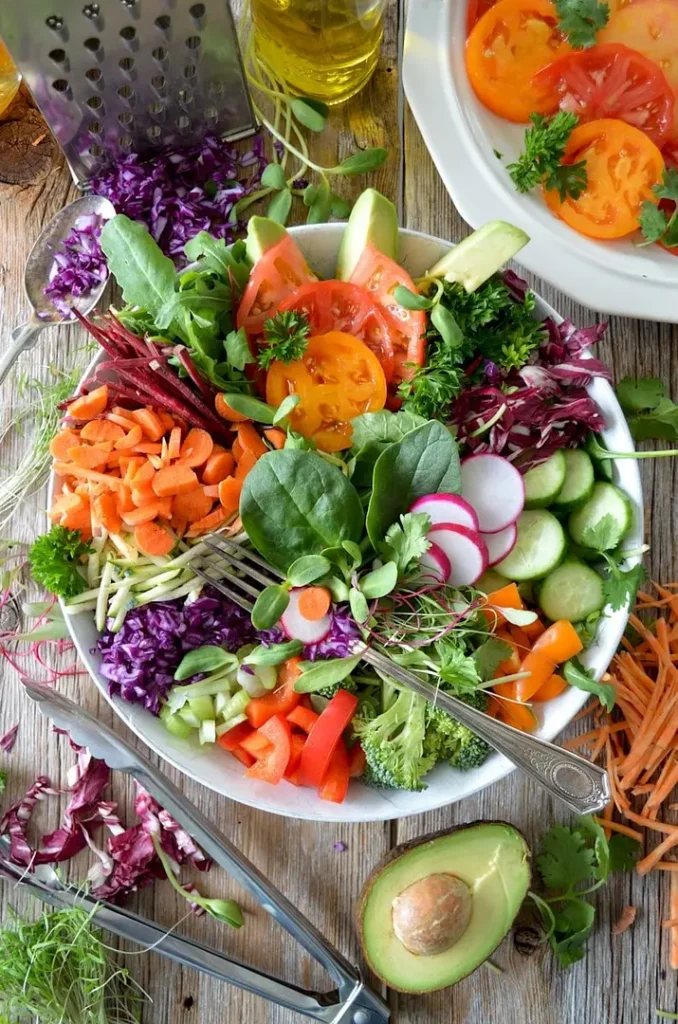Plant-Powered – Imagine stepping outside and gathering fresh basil, mint, or lavender from your kitchen garden. Simple acts like this do more than flavor your meals—they can help ease daily stress and boost your mood in natural and rewarding ways.
Kitchen garden therapy is a hands-on approach to Plant-Powered Wellness. Growing your herbs right at home gives you control over what goes into your body, supports relaxation, and adds peaceful moments to your day. I’ve found so much calm and confidence by tending to my little indoor garden, and I believe you can benefit from this too.

Join our Plant-Powered Wellness community and start your kitchen garden journey. Whether looking for natural ways to manage stress or eager to learn practical tips, you’ll find support and inspiration here. Connect with our friendly community and explore more resources on our YouTube Channel—videos that will walk you through, step by step, so you never feel lost.
To deepen your wellness journey, you might also enjoy our practical guide on natural remedies for chronic fatigue syndrome—another helpful resource for managing daily stress and restoring energy naturally.
Why Kitchen Garden Therapy Works for Everyday Stress
There’s a simple truth at the heart of Plant-Powered Wellness—working with your hands and nurturing living herbs truly calms the mind. Kitchen garden therapy isn’t just about growing food. It invites you to pause, breathe deeply, and reconnect with something tangible. When daily life pulls you in every direction, small moments with your indoor plants can feel grounding and peaceful.
 Photo by Kaboompics.com
Photo by Kaboompics.com
The Emotional Magic of Growing Herbs
Tending a kitchen garden steers your attention away from screens and worries. Touching soft basil leaves, smelling fresh mint, and watching sprouts turn into cheerful green bundles brings a steady rhythm to your day. These natural rituals act as small anchors, helping you keep cool when things get busy. Each seed planted is a promise—a reminder that growth takes patience, and slow progress still matters.
The act of nurturing plants:
- Offers easy wins that boost your sense of accomplishment.
- Sparks gentle happiness as you harvest herbs for tea or meals.
- Reconnects you with a sense of wonder, especially as tiny shoots become something beautiful.
These regular connections with nature are shown to decrease feelings of anxiety and sadness. Spending time with plants can lift your mood, and caring for your garden helps your mind slow down.
Backed by Research: Gardening and Stress Relief
Evidence shows that gardening relieves stress, not just for hobbyists, but for anyone seeking calm. Research published by the National Institutes of Health highlights improvements in mood, hopefulness, and even sleep from simple gardening activities. Results point to “increased hope, happiness, reduction of symptoms of depression, stress, and anxiety” 1. The positive effects are more than just a feeling; they’re measurable.
According to the Mayo Clinic, being active in the garden reduces stress and helps lighten your mood through gentle exercise and mindful focus. Nature-based activities like these help reset your mind and body, which is why Plant-Powered Wellness works so well for everyday stress. Even spending a little time each day with your herbs helps lower stress hormones, calm your thoughts, and build resilience against daily hassles.
- Gardening can lower stress hormones like cortisol.
- Contact with soil and plants may release serotonin, a natural mood booster.
- These mood shifts aren’t temporary—they can linger, helping you feel at ease throughout the week.
To see more about how nature and hands-on activities support stress management, the article on stress-relief gardening from Thrive gives a deeper look at the science behind these effects3. Every session with your garden is an investment in your emotional health.
Practical Outcomes You Can Feel
Embracing kitchen garden therapy shapes both your day and your wellbeing in tangible ways:
- Easier sleep after a relaxing evening spent tending your plants.
- More patience and focus during daily challenges.
- Fresh, healthy herbs at your fingertips whenever you need them.
Small steps in your plant-powered routine can lead to big emotional payoffs. If you’d like to keep building your wellness toolkit, our article about herbal teas and their healing benefits offers more ideas for supporting natural balance.
Plant-Powered Wellness Herbs: Best Choices for a Calm Mind
Growing herbs at home is a simple act with profound benefits for Plant-Powered Wellness. Just a few pots on a windowsill or a patch in the yard can produce remedies that calm your mind and lift your mood. Let’s look closer at three standout herbs—lavender, chamomile, and basil—that are easy to grow and deliver real stress relief. Each brings its calm, rooted in generations of herbal healing and supported by new research.
Lavender: Nature’s Chill Pill
 Photo by Tara Winstead
Photo by Tara Winstead
Lavender’s gentle purple blooms don’t just brighten a room—they fill it with a clean, soothing scent that helps smooth out a rough day. For Plant-Powered Wellness, lavender stands out because studies have shown that its aroma reduces heart rate and eases anxiety.
Growing lavender indoors? Pick a sunny windowsill with 6 hours of light a day. Outdoors, plant it in well-drained soil with space for air to flow. Water sparingly—lavender hates soggy feet. Harvest stems as soon as the flowers open. Hang them upside down to dry, then tuck dried sprigs in pillows, sachets, or tea blends.
Ways to use your homegrown lavender for peace of mind:
- Breath in calm: Place dried lavender on your desk or by your bed to help unclench your jaw and relax your mind.
- Lavender tea: Steep the buds in hot water to unwind at night.
- DIY soaks: Mix with Epsom salt for a calming bath.
Lavender is a tiny “chill pill”—natural and easy to nurture yourself. For more about herbal healing across cultures, check out The Tradition of Herbal Therapy.
Chamomile: Gentle Anxiety Relief
Chamomile is famous for its golden blooms and sweet, apple-like scent. It’s often the first herb people grow for stress relief. Chamomile gives you an easy win—its calming effect comes from drinking the tea and planting, caring, and harvesting.
How to grow chamomile:
- Start seeds indoors on a sunny sill, or sow directly outdoors after frost.
- Keep soil moist but never wet.
- Once plants reach 3-4 inches, thin them out for good air circulation.
- Harvest flower heads when fully open for the richest oils.
Dry your chamomile by spreading flowers on a towel for several days. Store in a jar. To make a soothing tea, steep two teaspoons of dried blooms in hot water for 5-10 minutes. Drink before bed for gentle sleep support or in the afternoon to take the edge off a stressful day.
Chamomile isn’t just an old wives’ remedy. Research backs this herb’s calming benefits, and it is even listed among the top herbs for anxiety for its ability to reduce tension and aid relaxation.
Basil: Everyday Uplift for Mood
Basil isn’t just for pesto. Its fresh, spicy leaves add a splash of green to your meals and boost your mood. Caring for basil can quickly become a refreshing habit in any Plant-Powered Wellness routine.
To grow basil:
- Choose a sunny spot (at least 6 hours sun each day).
- Keep soil moist, not waterlogged. Drainage is key.
- Pinch off flowers as soon as they appear to keep the basil bushy and flavorful.
- Harvest leaves regularly, starting from the top.
Use your basil leaves:
- Toss fresh in salads or on pizza.
- Blend into sauces for a stress-busting dinner.
- Brew in water for a unique herbal tea.
Basil contains compounds like linalool, which is also found in lavender and is linked to lower stress. It’s an easy herb for beginners; frequent harvests mean you always have mood-boosting freshness. The overall benefit? Quick, everyday support for steady energy, more precise focus, and a more positive outlook—right from your kitchen.
Explore the Health Benefits of Herbs and Spices for practical ways to amplify your Plant-Powered Wellness toolkit and discover how herbs and spices offer even more hidden wellness potential.
Getting Started: Creating Your Kitchen Herb Sanctuary
Setting up a small herb garden is a soulful act of Plant-Powered Wellness. You don’t need a backyard or fancy equipment—a few pots and the right spot in your home are more than enough to get started. The gentle aroma of herbs, the sight of new leaves, and the simple watering can calm your thoughts and bring peace into busy days. Whether new to gardening or picking it back up, it’s easier than you think.
Choosing Your Space: Windowsills or Countertop Magic
Find a spot in your kitchen with good light. Most common herbs love sunlight, so a south-facing windowsill is perfect. No bright windows? Grow lights work, too. Countertops near windows also work if they get a few hours of sun.
- Windowsill gardens need just a few pots and a drip tray.
- Tabletop setups work for smaller kitchens—any place with bright, indirect light counts.
- Consider your daily routine. Herbs by the sink or stove remind you to use and care for them, making gardening part of your everyday life.
Essential Supplies: Simple and Effective
Before planting, gather a few basics. These tools make the process easy, even for beginners:
- Containers: Start with pots that have drainage holes. Clay, ceramic, or recycled containers all work—pick what fits your space.
- Soil: Use a good-quality potting mix. Herbs don’t like heavy, compacted soil, and garden dirt can hold too much moisture.
- Watering can or spray bottle: Herbs prefer gentle watering of the soil, not the leaves.
If you want more details, you’ll find helpful pointers for picking the right pots and soil for healing houseplants and their spiritual benefits.
Light and Water: Keeping It Simple
Getting the basics right helps herbs thrive. Herbs need:
- Sunlight: Aim for 6 hours a day. Rotate pots every week so all sides get light.
- Watering: Water when the top inch of soil feels dry. Avoid soggy soil—most herbs handle dryness better than drowning roots.
- Air circulation: Don’t crowd pots too close together. Air flow helps prevent disease and keeps leaves healthy.
A simple finger test—poke your finger an inch into the soil. If it’s dry, water gently. If not, hold off. You’ll soon get a feel for what your plants need.
 Photo by Ron Lach
Photo by Ron Lach
Beginner-Friendly Steps: Start with Three Pots
Starting small is key—slow growth, frequent wins:
- Pick 2-3 easy herbs like basil, mint, or parsley.
- Fill each pot with potting mix, stopping an inch from the top.
- Plant seeds or seedlings at the recommended depth on the package.
- Water gently after planting. Keep the soil slightly damp (not soaked) until sprouts appear.
- Label each pot so you remember what’s growing!
Check your plants every morning. Watch for new leaves, touch the soil, and enjoy the progress. When you look forward to that burst of fresh green, you’ll see why so many people trust Plant-Powered Wellness.
Community Support: You’re Not Alone
You’re in good company if you need help or want to share your progress. The Plant-Powered Wellness community at The Holistic Life Hub offers tips and encouragement, and the YouTube channel has videos for each step, so you never feel stuck or uncertain.
Starting your kitchen herb sanctuary brings comfort, routine, and healing to your daily life. Every new sprout is a small victory that helps steady your mind and supports a more balanced, natural wellness plan.
From Garden to Table: Easy Ways to Use Fresh Herbs for Stress Relief
Stepping into your kitchen garden for a handful of fresh herbs feels like a pocket-sized retreat from daily pressures. Those vibrant green leaves aren’t just for flavor—they pack real wellness benefits, mainly when used mindfully. Bringing fresh herbs from your garden to your table connects you with Plant-Powered Wellness in the simplest everyday moments. Whether you want a soothing ritual, a boost at mealtime, or a fresh breath of calm, here are practical, enjoyable ways to use your homegrown harvest for stress relief.
Brewing Herbal Teas for Instant Calm
A cup of tea is a classic way to slow down and regroup. Fresh herbs steeped in hot water can transform a jittery afternoon or help you transition into a restful evening.
- Mint tea: Pick a handful of mint leaves, gently bruise them to release the oils, and steep in just-boiled water for 5–10 minutes. Mint’s crisp aroma lifts your mood and settles jangled nerves.
- Basil tea: Tear fresh basil leaves for a subtle, peppery cup that supports clarity and focus.
- Lavender and chamomile mix: Infuse equal parts of each for a calming bedtime tea that soothes body and mind.
Taking the time to prepare and sip herbal tea slows your pace, giving your mind space to unwind. This mindfulness ritual lets the sensory experience (sight, scent, and taste) do some heavy lifting for your stress response.
 Photo by Muhammad Khairul Iddin Adnan
Photo by Muhammad Khairul Iddin Adnan
Adding Herbs to Everyday Meals
Herbs bring freshness and gentle stress relief to your plate, not just your teacup. Cooking with homegrown herbs nurtures your Plant-Powered Wellness routine and makes meals feel special, no matter how simple. Try these stress-relieving ideas:
- Salad boost: Toss whole mint or basil leaves into salads for brightness and a fresh crunch.
- Herb butter: Mix soft butter with chopped parsley and chives. Spread on toast for a comfort snack.
- Relaxing soups: Stir a handful of fresh chamomile or basil into vegetable soups as they finish cooking. This gently infuses the broth with calming herbal notes.
- Homemade pesto: Blend basil leaves, olive oil, and a handful of nuts. Use as a dip or a sauce for instant mood-boosting flavor.
Simple recipes are easy wins. They allow you to enjoy authentic taste and aroma and send signals to your body that it’s time to relax.
See the benefits of a plant-based diet for more on how small meal changes can improve your health and wellbeing.
Herb-Infused Mindfulness Practices
Using herbs isn’t just about eating or drinking. Handling, smelling, and arranging herbs can be a calming mindfulness exercise.
- Scent meditations: Hold a fresh mint or lavender sprig to your nose. Take several slow breaths, paying attention to the scent and how it makes you feel.
- Herbal hand rub: Gently rub fresh basil or rosemary leaves between your palms, then pause and inhale deeply. This quick ritual grounds your thoughts and can serve as a reset during stressful moments.
- Tabletop bouquets: Place fresh cuttings of your favorite herbs (mint, lavender, chamomile) in a small vase where you work or relax. The gentle greenery and aroma bring a natural sense of peace into your space.
Practicing mindfulness with herbs from your kitchen garden makes stress relief an easy part of your day. It blends your senses—touch, smell, taste—so you feel fully present, not just going through the motions.
These simple habits create routines you can look forward to. They build mental resilience and reinforce the lasting value of Plant-Powered Wellness for your everyday life.
Community Connection: Share, Learn, and Grow Together
Plant-powered wellness goes beyond your kitchen—it thrives when people share, learn, and support each other. When you invite others into your journey, whether a neighbor swapping basil cuttings or an online friend sharing their best chamomile tea recipe, you multiply the benefits. Community nurtures growth and makes every step more meaningful. You don’t have to grow alone; together, we celebrate every sprout, swap helpful tips, and encourage perseverance when a season brings slow results.
 Photo by cottonbro studio
Photo by cottonbro studio
Why Connection Matters in Plant-Powered Wellness
Nurturing herbs can be a quiet joy, but it’s even better to talk about the process with people who “get it.” When you’re part of a Plant-Powered Wellness community, every success feels bigger and every challenge smaller. Whether you’re new to growing or an old hand, surrounding yourself with people on similar journeys brings a gentle push to keep going.
Key benefits include:
- Sharing mistakes and troubleshooting together—so you recover fast and laugh off little setbacks.
- Exchanging uplifting stories reminds you that growth (in life and gardens) doesn’t happen in a straight line.
- Feeling understood by people who value natural wellness instead of quick fixes.
Are you curious about other ways to stay balanced and connected to a like-minded circle? The guide to Finding Balance and Wholeness through Mind, Body, and Soul highlights how a supportive network enriches your wellness journey and deepens your sense of belonging.
Real Growth Happens Together: Support and Learning
Your best lessons often come from others—small tricks to keep basil perky, favorite herb combos, or ways to weave mindful gardening into busy schedules. In Plant-Powered Wellness, knowledge multiplies when you share what works and ask for advice when stuck.
Ways to maximize support and learning:
- Join the Plant-Powered Wellness conversation by posting your wins and questions in the comments section.
- Follow and engage with us on social media for daily inspiration, practical tips, and stories from fellow growers.
- Subscribe to our YouTube channel for step-by-step videos—never garden alone or get lost in a new project.
- Give back by welcoming newcomers, offering encouragement, or simply sharing a smile after a tough gardening day.
Support is the root system of the community. When people swap ideas and cheer on each other, everyone grows stronger, like a thriving bed of herbs.
Our Shared Story: Plant-Powered Wellness in Everyday Life
Every homegrown herb, cup of calming tea, or new green shoot holds a story. Sharing those stories makes the wellness journey more uplifting and less lonely. Small details—like the first time your lavender bloomed or the creative way you saved a wilting mint plant—show progress and inspire others.
To keep the spirit alive:
- Share before-and-after photos on social media to celebrate progress.
- Tell your story using #PlantPoweredWellness for a chance to be featured.
- Swap recipes or herbal wellness routines, inviting everyone in the community to try something new.
If you’re looking for deeper guidance or a ritual toolkit that brings people together, check out these Top 10 Holistic Self-Care Rituals for Peace of Mind. These practices offer even more ways to refill your cup and help the people around you do the same.
The Plant-Powered Wellness community grows stronger with every voice. Let’s keep sharing, learning, and cheering each other on—day by day, leaf by leaf.
Conclusion
Kitchen garden therapy is the heart of Plant-Powered Wellness. Nurturing herbs in your own space offers more than fresh flavors—each moment tending to your plants supports balance, calm, and confidence that ripple through your daily life. This simple practice is a direct, rewarding way to reduce stress and reconnect with what’s real.
Your progress is worth celebrating. Share your kitchen garden wins in the comments, subscribe to the YouTube channel for ongoing support, and dive deeper into herbal and natural solutions for stress relief. For more inspiration on how ancestral practices offer healing and resilience, explore practical insights on Ancient Wisdom for Modern Health.
Thank you for being part of the Plant-Powered Wellness community. Every seed you plant and every leaf you harvest make a difference—not just for your well-being but for everyone connected by this growing movement.





